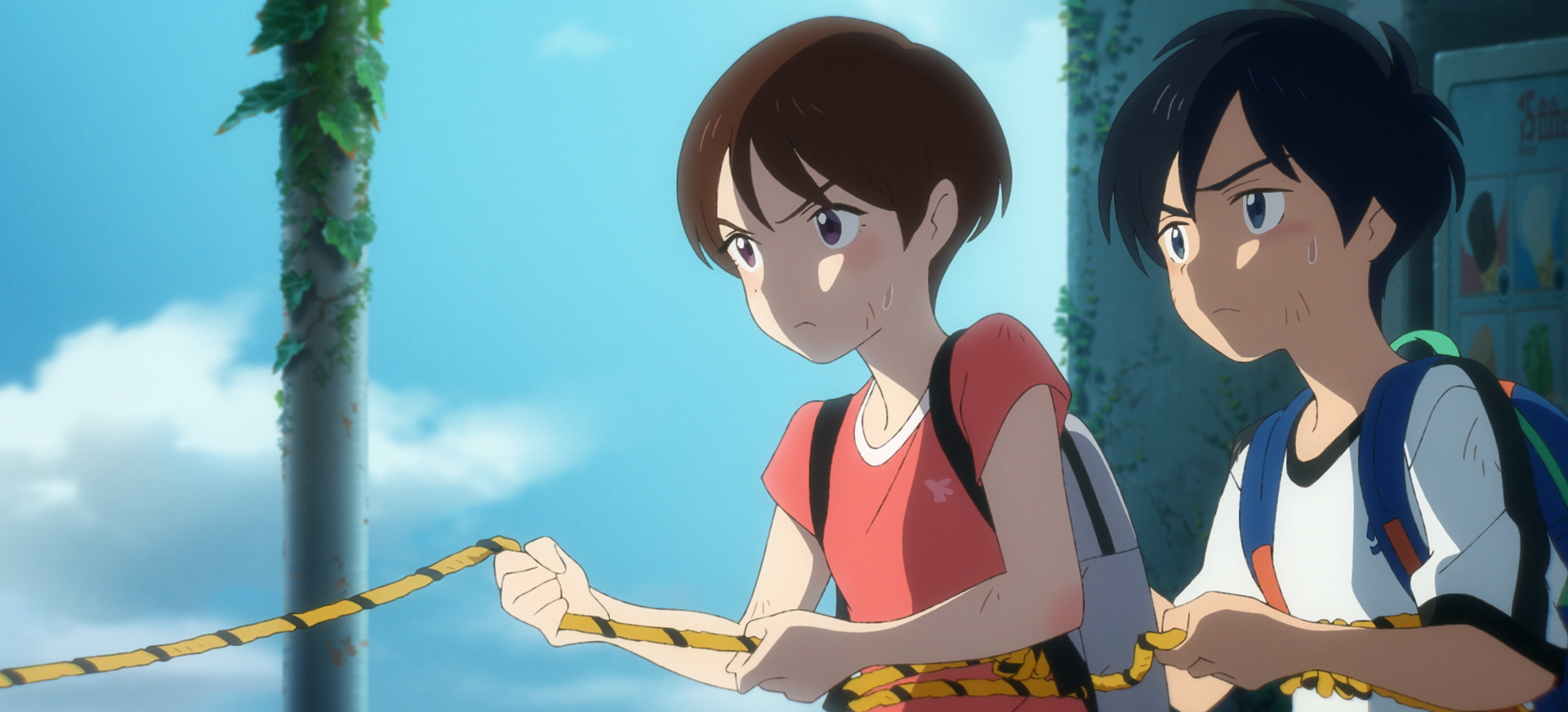For his sophomore feature, “Drifting Home” (streaming on Netflix), director Hiroyasu Ishida (“Penguin Highway”) had a flash of inspiration that developed into a surreal anime about a group of sixth grade pals who inexplicably find themselves adrift at sea in an abandoned apartment building. “It began with the image of the apartment building drifting along the waters,” he told IndieWire. “And when I drew this, I thought this was quite interesting and something no one had ever seen. So it gave me the confidence to just run with it make a feature film out of it.”
Once he had his central image, Ishida began exploring the psychological ramifications for this group of lost kids, centered on his co-protagonists: Natsume and Kosuke, who are almost like siblings and who grew up together in the apartment building. But there are conflicts between the two friends that surface during the bizarre voyage to find their way back home, which ripple outward among the young castaways.
“I was very particular about their sentiments and emotions as they interact with each other and their conflicts,” Ishida said. “And also I wanted to speak to [how] our relationship to each other has become fainter and fainter.” Social media has altered the way people interact, he added, “and I wanted the kids to find a way to march forward even given the way things are today.”
Ishida unconsciously tapped his own bittersweet adolescence in fleshing out “Drifting Home,” including a dark incident that’s so personal that he declined to elaborate. “My grade school years were when I had the most fun, and they were indelible memories in my life,” he said. “At the same time, it was when I felt the most pain as well. I did something very bad toward the end of my fifth year, which I can’t go into the details of because it’s too private.”

“Drifting Home”
Netflix
This resulted in Ishida being ostracized from both his school and family, setting him adrift for a time in lonely, guilt-ridden isolation. “I had lost my places where I belonged,” he said. “A chain of events ultimately led people to forgive me, and I realized that I had all this emotion, this sense of remorse, all pent up inside me that exploded during that moment of forgiveness. And I burst out into tears. It was really the first instance where I discovered the sense of losing one’s place where you belonged. And I remembered that sense of regaining that place [which found its way into the film].”
The remote isolation of the COVID-19 pandemic impacted both the production (at anime studio Colorido) and the storytelling of “Drifting Home.” Since this marked the director’s first original film, it brought added pressure in trying to find his place and how to interact with the crew and what kind of dynamic to create. “I was at quite a loss in a lot of instances,” said Ishida. “It’s like you’re the captain of a ship. You have all of these people boarding your ship, and you have to try to find a direction in which to pull them and lead them, and you don’t know your place in the ship. And also you’re kind of guilty for having pulled everyone onto this ship to embark on this journey with you.” It’s a situation Ishida described as analogous to Natsume’s obsession with returning to the apartment building.
While “Drifting Home” is set in the present day, it also has the feeling of being frozen in time. That’s partly due to the introduction of a supernatural character, a mysterious boy named Noppo, who is mistaken for a ghost that haunts the apartment building. He appears to be half-human and half a part of nature, with vegetation and an electrical force. The director explained that Noppo represents a spirit that inhabits the large cluster (or danchi, in Japanese) of apartment buildings. “You could even say that it is the personification of the building itself,” he added. “The waters that they are drifting across are so vast that you might think it is an ocean, but I think it’s more like a river. What you’re seeing in the film is a journey of these buildings being washed from one bank to another [leading to a netherworld].”

“Drifting Home”
Netflix
Aside from Noppo, the animation style — a combination of hand-drawn and CG backgrounds — is very realistic. The apartment building is a wonder to behold. While Ishida has never lived in such a complex, he’s always had a nostalgic fascination with the design of the simple, square, white rows of buildings that became prominent in Japan during during the post-war boom of the 1960s.
“We did a lot of research into how to depict the danchi apartment complex,” Ishida said. “And there was a lot of meticulous detail that went into the CG graphics and also the sakuga elements [of key animation] and background artistry as well. We were also meticulous about how we depicted the waters, and very particular about the compositing techniques we were using and the gradation of the colors and waters. We’re depicting a very esoteric world here, but we wanted to ground this in reality to bring you this sense of a world being right there in front of you if you look close enough.”



